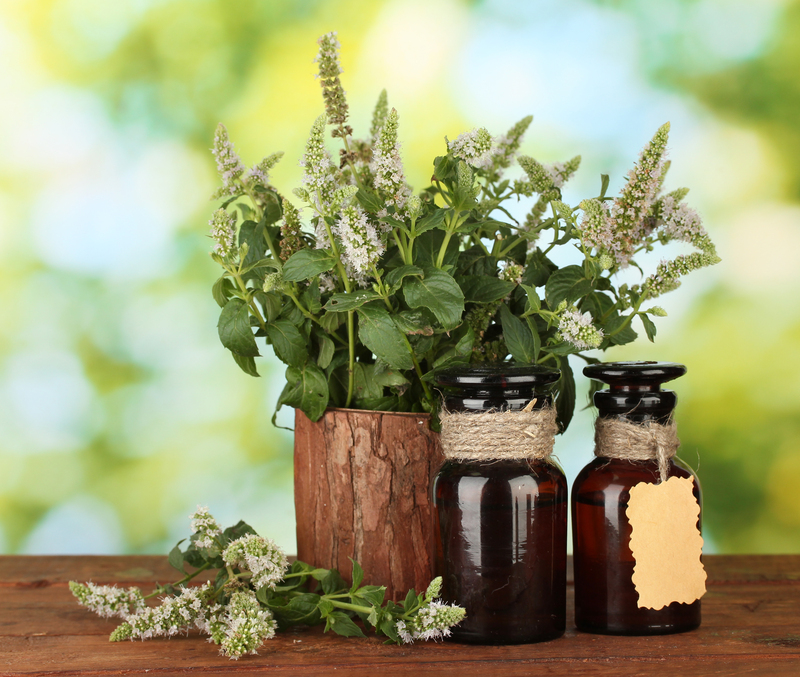Transform your space with spotless, mould-free window sills
Posted on 17/09/2025
Transform Your Space with Spotless, Mould-Free Window Sills
Are you looking to revitalise your home or office? Start with an easily overlooked detail: your window sills. Clean, well-maintained window sills not only enhance the aesthetics of any room but also contribute to a healthier, fresher environment. In this comprehensive guide, we'll explore how to transform your space with spotless, mould-free window sills, ensuring your windows shine and the air you breathe is cleaner than ever.
Why Clean, Mould-Free Window Sills Matter
Window sills are prime areas for dust, dirt, moisture, and mould buildup--all of which can hinder indoor air quality and the overall look of your living space. Ensuring your window sills stay immaculate and free of mould means:
- Superior indoor air quality
- Reduced risk of respiratory issues
- Prevention of allergen buildup
- Enhanced room aesthetics
- Improved longevity of window sills
The Impact of Mouldy Window Sills
Mould growth on window sills is not just unpleasant to look at; it can pose serious health risks, particularly for people with asthma, allergies, or compromised immune systems. This is why maintaining mould-free window sills is crucial for both health and comfort.

Spotting the Early Signs of Mould
Regularly inspect your windows for any early signs of mould or mildew to quickly address the problem before it worsens. Common indicators include:
- Dark spots or discoloration along the sill
- Musty odours
- Dampness or condensation accumulation
- Peeling paint or warped materials
Being vigilant means you can maintain spotless, healthy window sills year-round.
Proven Steps to Achieve Spotless, Mould-Free Window Sills
Follow these steps to transform your space by keeping your window sills impossibly clean and free from mould:
1. Routine Cleaning is Essential
Develop a regular cleaning schedule for your window sills to prevent dirt and moisture buildup.
- Dust frequently using a microfiber cloth.
- Wipe sills with a mild soap and water solution.
- Dry the area thoroughly to prevent moisture retention.
2. Address Moisture Immediately
Moisture is the primary catalyst for mould growth on window sills. Don't let spilled water, condensation, or leaks linger:
- Wipe away condensation as soon as it appears.
- Seal any window leaks swiftly.
- Consider using a dehumidifier in humid rooms.
3. Use Natural Anti-Mould Solutions
Prefer natural alternatives for cleaning? Try these safe, effective options for mould-free, shiny window sills:
- White vinegar: Spray directly, let sit for 60 minutes, then wipe clean.
- Baking soda paste: Mix with water and scrub stubborn spots.
- Lemon juice: Naturally antimicrobial and leaves a fresh scent.
- Hydrogen peroxide: A powerful disinfectant for tackling visible mould patches.
4. Avoid Common Cleaning Mistakes
Some cleaning habits can actually worsen mould problems on your window sills:
- Never use excessive water; always follow up with thorough drying.
- Don't ignore cracks or peeling paint: address these immediately to keep moisture out.
- Avoid abrasive scrubbers on delicate surfaces, as they can damage finishes.
Long-Term Prevention Strategies for Mould-Free Window Sills
1. Improve Air Circulation & Ventilation
Good airflow prevents moisture from accumulating on and around window sills:
- Open windows daily for fresh air (weather permitting).
- Use fans or extractor fans in kitchens and bathrooms.
- Maintain clear sills--avoid clutter that traps dirt and dampness.
2. Control Indoor Humidity
Maintaining an indoor humidity level between 30% and 50% discourages mould growth:
- Invest in a hygrometer to monitor indoor humidity.
- Use a dehumidifier in trouble areas.
- Keep indoor plants from overcrowding window sills--soil moisture can contribute to dampness.
3. Apply Protective Finishes
If you're refurbishing or painting your window sills, apply a mould-resistant finish:
- Choose high-quality, washable paints or varnishes.
- Seal any gaps between the sill and window frame with caulk.
- Consider water-resistant materials in especially humid spaces.
Deep Cleaning for Severely Stained or Mouldy Window Sills
If your window sills are already affected by mould or deep staining, take these extra steps to restore them to pristine condition:
Step 1: Prepare the Area
- Wear protective gloves and a mask to avoid inhaling spores.
- Open nearby windows for ventilation.
- Lay down an old towel or plastic sheet to collect residue.
Step 2: Remove Excess Mould
- Gently scrape off heavy mould growth with a plastic scraper or old credit card.
- Dispose of the removed mould in a sealed bag immediately.
Step 3: Clean with a Strong Solution
- Mix one part bleach with three parts water or use a commercial anti-mould spray for tough cases.
- Apply the solution to affected areas and let it sit for 15 minutes.
- Scrub thoroughly with a soft-bristled brush.
- Rinse with clean water and wipe dry.
Step 4: Assess for Damage
If the mould has compromised the window sill material (warping, crumbling, or rot), you may need to replace or refinish the sill. This prevents mould from returning and keeps your space looking spotless and inviting.
Best Products to Help Keep Window Sills Mould-Free & Spotless
Transform your space with the help of these proven products:
- Microfiber cleaning cloths--for dusting and wiping.
- Anti-mould sprays--choose non-toxic varieties for homes with children or pets.
- Sealants and caulks--to prevent leaks and seal cracks.
- Humidity meters--for accurate monitoring.
- Waterproof, mould-resistant paints--for long-lasting protection.
Window Sill Materials: Which are Easiest to Keep Spotless and Mould-Free?
Choosing the right material can make it easier to maintain mould-free, spotless window sills:
- uPVC: Highly resistant to moisture and easy to wipe clean.
- Stone or composite stone: Less porous, durable, and ideal for humid climates.
- Powder-coated metal: Non-porous and simple to sanitize.
- Treated, painted wood: A classic choice--ensure the finish is regularly maintained to prevent water penetration.
If your home's sills are older or made from untreated wood, consider investing in modern, moisture-resistant upgrades to help maintain lasting cleanliness and health.
Window Sill Styling Ideas to Complement Cleanliness
Once your window sills are spotless and mould-free, enhance your decor:
- Minimalist decor: A few curated items make cleaning easier and reduce clutter.
- Lightweight planters: With trays underneath to catch water and prevent moisture buildup.
- Stained glass ornaments: Add colour and interest without trapping dust.
- Decorative stones or shells: Pretty, easy to move for cleaning.
Remember, simplicity is key--less clutter means less opportunity for dust and moisture to accumulate.

Frequently Asked Questions: Spotless, Mould-Free Window Sills
How often should I clean my window sills?
For best results, dust weekly and wipe with a damp cloth monthly. Address spills and condensation immediately.
What is the fastest way to remove mould from window sills?
White vinegar diluted with water works fast for light mould. For stubborn patches, use a bleach solution or hydrogen peroxide. Always dry thoroughly afterward.
Can I prevent condensation on my window sills?
Yes! Improve ventilation, use dehumidifiers, and insulate windows where possible to keep condensation (and therefore mould) at bay.
Are there window sill treatments to avoid?
Avoid porous materials in bathrooms, kitchens, or any room prone to humidity. Untreated wood is especially susceptible to mould and water damage.
Transform Your Home or Office Today!
Spotless, mould-free window sills elevate your space, making every room feel brighter, healthier, and more welcoming. Implement these cleaning and prevention strategies to enjoy the many benefits of pristine window sills. Remember, the secret to a transformed space lies in the details!
Start today and discover how fresh, clean window sills can truly make a difference in your life.




